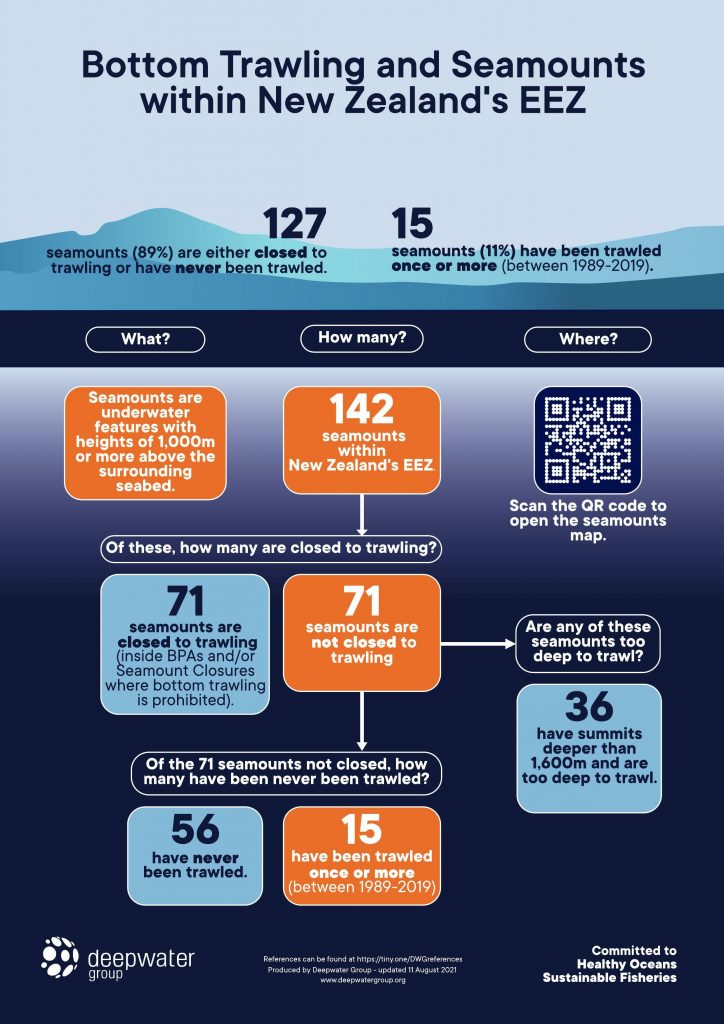Bottom Trawling and Seamounts
Sources and references

91% of the seabed within New Zealand’s Exclusive Economic Zone (EEZ) has never been bottom trawled.1
Only 1.1% of our EEZ is contacted by bottom trawls each year, most occurring over sand and mud on fishing grounds that have been trawled year after year.1
31% of our EEZ is closed to bottom trawling by law2, covering:
- 1.2 million square kilometres of the seabed2 (an area 4.5 times the size of New Zealand)
- 71 seamounts (features higher than 1,000 meters)3
- 93 smaller hills and knolls4
Of the 142 seamounts within our EEZ, 127 have never been trawled and 71 are closed to bottom trawling.3
Of the 71 seamounts not closed to trawling, 56 have never been trawled and 15 have been trawled once or more (between 1989-2019).3
Of the 71 seamounts not closed to trawling, 36 are too deep to trawl (summits deeper than 1,600m).3
NIWA records show 20% of seamounts are known to support coral.5
Corals are widespread throughout our EEZ. Only 9% of our EEZ has ever been contacted by bottom trawl.1
1 Baird, S.J. and Mules, R (In press) Extent of bottom contact by commercial trawling and dredging in New Zealand waters, 1989–90 to 2018–19. New Zealand Aquatic Biodiversity Report No.xxx.
2 Ministry for Primary Industries 2021 – GIS data including EEZ keyholes
5 Dr. M Clark NIWA, pers. comm.
